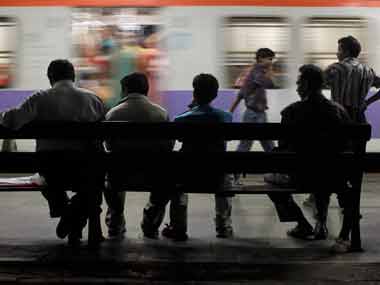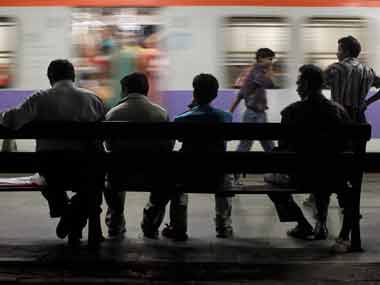As Railway Minister Pawan Kumar Bansal is all set to present the Railway Budget 2013-14 in Parliament today, amid expectations that several new trains and more passenger-friendly measures, critics haves questioned the need for a separate Rail Budget which is seen more as a political exercise than a financial necessity. Rail Budget today is merely a ritual According to a report by HDFC Securities,when the Railway Budget was first passed in 1924 , Railways accounted for 75% of public transport and 90% of freight. It also accounted for 70% of the colony’s budget. But today the railways merely account for around 9% of the annual Budget and astonishingly lower share of passenger and freight traffic. [caption id=“attachment_639741” align=“alignleft” width=“380”] It is time to stop preparing a separate Budget only for the Railways Reuters[/caption] During the British Rule in India, the Railway Budget and the General Budget were presented together. It was in the year 1924 that both the budgets were separated as the Indian Railways started turning into a Huge National Network Organization so it required a separate budget, which could deal with expenditure on Infrastructure and Operating Revenue, Passenger and Freight Tariffs . According to the Separation Convention on the recommendations of the Acworth Committee 1924, the Railway Budget is presented to the Parliament by the Union Minister for Railways, two days before the General Budget, usually around 26th February." Hence, a separate Rail Budget at that time made sense because it formed three-fourth of the country’s budget. Post-Independence, successive governments continued with the practice. But there is no justification for it since other sectors, with equal or more importance such as defence, come under the general budget today. It’s all about politics In India, everything is political and every little move is linked to vote-bank politics. The Railways is no exception. In the coalition era, the ministry has always gone to an ally with considerable political heft.Successive ministers have promised new trains in their home states to get party votes. Hence, over the years, the importance and appeal of the Rail Budget has considerably diminished, but ministers do not miss any opportunity to use the Budget platform for carving out zones and locating headquarters in their states, declaring trains connecting their constituencies and for making several vote-catching announcements. Railways is in shambles However, railways needs thousands of crores to secure its lines and modernize its stations. Railways runs at a 95% operational efficiency : For every Rs 95 pent on running the trains, it gets Rs 100 back. Leaving just Rs 5 as profit to take care of future growth. When Laloo inherited it from Nitish Kumar the operating efficiency stood at 92%. He improved it to 77% in 2006, but it deteriorated to 89% at the time of handing over the baton to Mamta Banerjee.
According to a Business Standard column
, the extreme visibility of the rail budget accentuates political predilections and hence should be replaced with an unbrella ministry of transport. “Keen to show a surplus budget, more so to accommodate unremunerative projects, unviable schemes and cross-subsidies, adequate provision is sometimes denied for important requirements like depreciation, safety, pension and development”. Increased intervention by finmin and planning commission There is increased interference by the finance ministry and the planning commission, which may have led to the casual manner in which Mamata ran the ministry. “Though Laloo made full use of the facility of a Luxurious Saloon provided by the Railways, he used it 369 times in his 5 year tenure between 2004 and 2009, he allowed the Railway officials to run the department efficiently. Mamta , perhaps never used the Saloon, but she ensured that the Railway Bhavan mandarins never took a decision on their own as she was mostly in Kolkata. The Railways officials had to fly to Kolkata to get her consent on important matters. One person was specially deputed fly to Kolkata just to get her signatures on important papers. A one-year bill was just 11 crore,” said the HDFC report. The Indian Railways should instead improve safety record, become viable, customer oriented, modernise and improve operating ratio if it wants to continue with the tradition of presenting a separate budget.
It is time to stop preparing a separate Budget only for the Railways Reuters[/caption] During the British Rule in India, the Railway Budget and the General Budget were presented together. It was in the year 1924 that both the budgets were separated as the Indian Railways started turning into a Huge National Network Organization so it required a separate budget, which could deal with expenditure on Infrastructure and Operating Revenue, Passenger and Freight Tariffs . According to the Separation Convention on the recommendations of the Acworth Committee 1924, the Railway Budget is presented to the Parliament by the Union Minister for Railways, two days before the General Budget, usually around 26th February." Hence, a separate Rail Budget at that time made sense because it formed three-fourth of the country’s budget. Post-Independence, successive governments continued with the practice. But there is no justification for it since other sectors, with equal or more importance such as defence, come under the general budget today. It’s all about politics In India, everything is political and every little move is linked to vote-bank politics. The Railways is no exception. In the coalition era, the ministry has always gone to an ally with considerable political heft.Successive ministers have promised new trains in their home states to get party votes. Hence, over the years, the importance and appeal of the Rail Budget has considerably diminished, but ministers do not miss any opportunity to use the Budget platform for carving out zones and locating headquarters in their states, declaring trains connecting their constituencies and for making several vote-catching announcements. Railways is in shambles However, railways needs thousands of crores to secure its lines and modernize its stations. Railways runs at a 95% operational efficiency : For every Rs 95 pent on running the trains, it gets Rs 100 back. Leaving just Rs 5 as profit to take care of future growth. When Laloo inherited it from Nitish Kumar the operating efficiency stood at 92%. He improved it to 77% in 2006, but it deteriorated to 89% at the time of handing over the baton to Mamta Banerjee.
According to a Business Standard column
, the extreme visibility of the rail budget accentuates political predilections and hence should be replaced with an unbrella ministry of transport. “Keen to show a surplus budget, more so to accommodate unremunerative projects, unviable schemes and cross-subsidies, adequate provision is sometimes denied for important requirements like depreciation, safety, pension and development”. Increased intervention by finmin and planning commission There is increased interference by the finance ministry and the planning commission, which may have led to the casual manner in which Mamata ran the ministry. “Though Laloo made full use of the facility of a Luxurious Saloon provided by the Railways, he used it 369 times in his 5 year tenure between 2004 and 2009, he allowed the Railway officials to run the department efficiently. Mamta , perhaps never used the Saloon, but she ensured that the Railway Bhavan mandarins never took a decision on their own as she was mostly in Kolkata. The Railways officials had to fly to Kolkata to get her consent on important matters. One person was specially deputed fly to Kolkata just to get her signatures on important papers. A one-year bill was just 11 crore,” said the HDFC report. The Indian Railways should instead improve safety record, become viable, customer oriented, modernise and improve operating ratio if it wants to continue with the tradition of presenting a separate budget.
4 reasons why Rail Budget 2013 is deeply political
FP Staff
• February 26, 2013, 11:43:40 IST
Unlike 1924 when revenue receipts of Railways amounted to a third of the total government receipts, today the Indian Railways is not the government’s supreme revenue earner any more.
Advertisement
)
End of Article